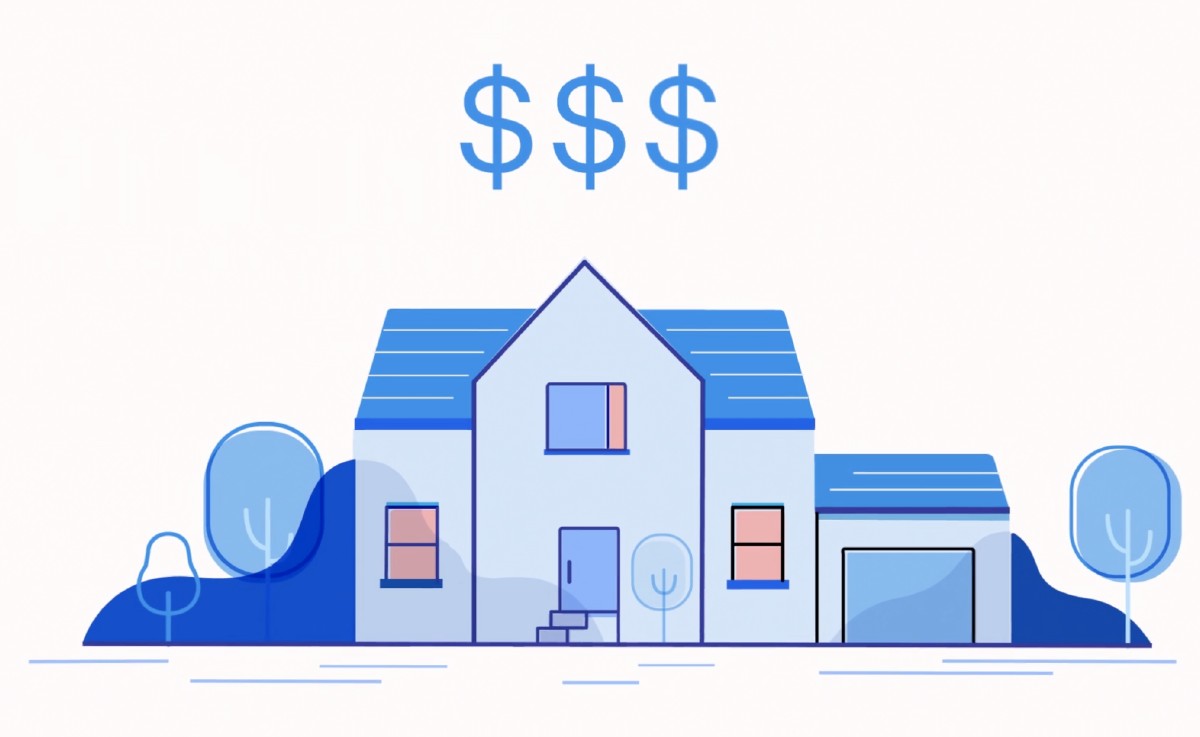Buying or selling a home is becoming easier, faster and more efficient for buyers and sellers, thanks to cutting-edge innovations that are updating the entire real estate experience.
Here’s a look at how five innovations—drone photography, artificial intelligence, virtual reality, augmented reality, and digital transaction services—could make your next real estate transaction a lot less stressful.
1. Get a birds’ eye view with drone photography
Pictures and videos taken from unmanned aerial systems, better known as drones, are “an incredible tool” for home buyers, says the National Association of Realtors, a trade group headquartered in Chicago.
Rather than struggling to imagine a large property, or one with unusual features, in all its splendor, buyers can see the home from the sky with clear shots of all the features.
While any home can benefit from eye-in-the-sky photography, drone images are especially effective for estate properties. Outdoor features like horse stables, farmland, lake or oceanfront access, sports courts, swimming pools and ocean or mountain views show particularly well.
Drone photography is also a huge benefit for buyers who are moving to a new city, buying a vacation or investment property in another town, or simply looking to streamline their home-buying process. Buyers can look at images that show the entire property within its locale rather than only the street view and interior rooms. The bigger picture helps buyers visualize the property and what’s around it. If a physical trip proves necessary, it may be accomplished more efficiently due to the preview drone photography offers.
Aerial video of a Florida-based property, produced with drone technology by Dronebase.
Drones are important to sellers, too. Aerial photographs can enhance the appeal—and potentially the price—of homes that might not show their best side with only traditional exterior or interior photographs.
Federal laws that regulate drones used to be quite murky. But then the Federal Aviation Administration (FAA) issued its Small Unmanned Aircraft Rule, which governs how these devices can be used. The rules allow home sellers and real estate brokers to use drones to showcase homes and neighborhoods, subject to certain restrictions and requirements.
Today, real estate agents use drones to obtain inexpensive aerial images of for-sale homes, commercial properties and parcels of undeveloped land. In an undated document, the FAA said 48 percent of professional-type drones were used primarily for “aerial imaging and data collection, including real estate photography.” Some agents believe drones will become a standard practice in real estate sales.
2. Let a virtual assistant shop for a home that fits your needs
Artificial intelligence (AI) is another futuristic win for home buyers. Buyers typically search for homes that are for sale on websites that display data and images based primarily on physical characteristics like square footage and the number of bedrooms and bathrooms a home has.
But suppose an AI could learn what buyers wanted and valued and make recommendations. ATTOM Data Solutions, a property data company in Irvine, Calif., says comparison tools are becoming “more sophisticated and user-friendly.” Real estate currently lags other industries in using this technology, but could catch up quickly.
 The real estate portal Homes.com launched its new site in May, using machine learning algorithms to deliver personalized, customized search results for home buyers. Users can upload images of homes they like and receive recommendations for listings with with similar looks or features.
The real estate portal Homes.com launched its new site in May, using machine learning algorithms to deliver personalized, customized search results for home buyers. Users can upload images of homes they like and receive recommendations for listings with with similar looks or features.
In the future, ATTOM Data suggests, AI will match buyers to for-sale homes based on “things that really matter” to the buyers, such as their preferences and ideologies. For example, buyers who value environmental protection, the outdoors and energy conservation might be matched with properties that have more mature, leafy trees.
3. Tour for-sale homes with virtual reality
The ability to see pictures, slideshows and videos of for-sale homes online isn’t new, but until recently, these images were limited to two dimensions.
Now, 3D virtual reality (VR) tours of homes for sale can be viewed online or with inexpensive VR viewers like Google’s Cardboard. These devices help to create the feeling of, say, standing next to the custom granite countertop.
 Sample of a house listing that allows visitors to take a virtual tour.
Sample of a house listing that allows visitors to take a virtual tour.
VR home tours are more than 3D models of homes. They’re immersive visualizations in high-resolution that can feel almost as real as being physically present in the space.
Users can virtually look up and down, zoom in and out, spin around, climb stairs or walk from one room to the next. Buyers can even virtually tour a home that’s under construction as if it were completed.
Imagine walking through multiple homes without having to get in a car and drive around, searching for addresses and parking spaces, and fiddling with lockboxes, house keys and home security systems.
One of the leaders in this industry is Matterport, a San Francisco based company, uses proprietary machine vision technologies and deep learning algorithms to enhance the 3D experience. Matterport’s cameras and cloud services make it quick and easy to turn real-world places into immersive virtual experiences. According to the company, over 30,000 real estate brokerages and agents – among them well-known firms such as Keller Williams, Coldwell Bankers, and Berkshire Hathaway – have used Matterport to feature their property listings so far.
Example of a 3D showcase of home for sale, created with Matterport technology.
VR tours are a big development for sellers, too.
Once a tour has been created, sellers don’t have to vacate their home for open houses or to allow buyers who haven’t experienced floor plan or features virtually to come inside. Buyers in remote locations, literally around the world, can tour — and maybe decide to buy — a seller’s home.
4. Stage or furnish a home with augmented reality
Trying to visualize home improvements or pre-sale staging ideas isn’t easy. Nor is it a breeze to picture your own new or existing furniture inside a home you want to buy. That’s where augmented reality (AR) comes in.
Like many other retailers, Pottery Barn is offering an AR app for easy furniture shopping. Users can pick a piece of furniture and virtually place a life-sized rendering in their house with augmented reality. They can choose from all sorts of Pottery Barn products and customize them by color, size, and more.
While virtual reality shows everything, AR adds to what’s already there.
With AR, buyers can add virtual furniture and home accessories to physical spaces before they make a purchase. No more clashing colors, conflicting styles or furniture that doesn’t fit. Instead, buyers can swap out images of chairs, sofas, tables, lamps and more, making as few or as many changes as they want until they love their space.
Home design maven Domino touts six favorites of the many mobile apps that include augmented reality:
- Amikasa – 3D floor planner (iOS & Windows)
- Anthropologie – fashion and home decor shopping (iOS)
- Houzz – home design (iOS, Android, Windows)
- Ikea Place – furniture shopping (iOS)
- Pottery Barn – furniture shopping and room design (iOS, Android)
- Wayfair – furniture shopping (Android)
5. Streamline sales or purchases with digital transaction services
Other innovations aim to simplify the home-buying process by enabling buyers and sellers to complete the different steps of their transaction online.

Here are three examples:
- DocuSign allows buyers and sellers to complete offers, counteroffers, contracts and other documents online with eSignature technology.
- Notarize.com enables buyers and sellers to have legal documents, including real estate ones, notarized online. The process includes uploading the documents and participating in a video call with a notary public in Virginia. The company says its service can be used in any U.S. state except Iowa.
- Lenda.com is an online mortgage platform that streamlines the process of applying for a loan to buy a home or refinance an existing mortgage. Other companies that offer this type of service include SoFi, Rocket Mortgage by Quicken Loans, and Guaranteed Rate.
Final thought
While many other industries have stayed current with technology trends, the real estate industry is still in the early stages of adopting innovations such as artificial intelligence, virtual reality, and digital transaction services. Now, it’s time for a widespread adoption to transform the traditional way of buying and selling a home into a process that makes of the biggest financial transactions in a consumer’s life faster and easier.
Get an offer with a click of a button
Sell your home directly to Opendoor, so you can skip all the hassle and months of uncertainty. Simply enter your address – and get our offer with a few simple steps.




